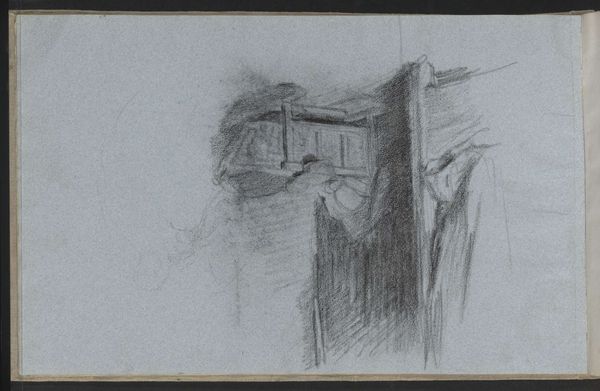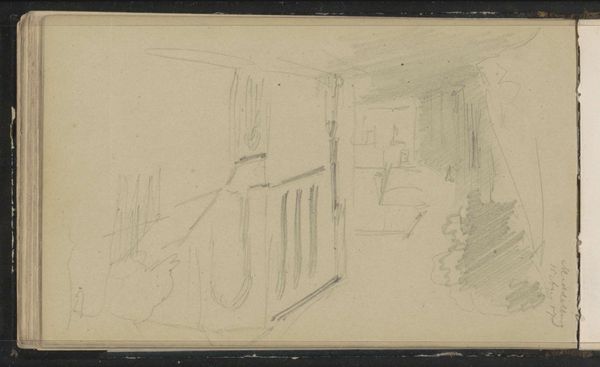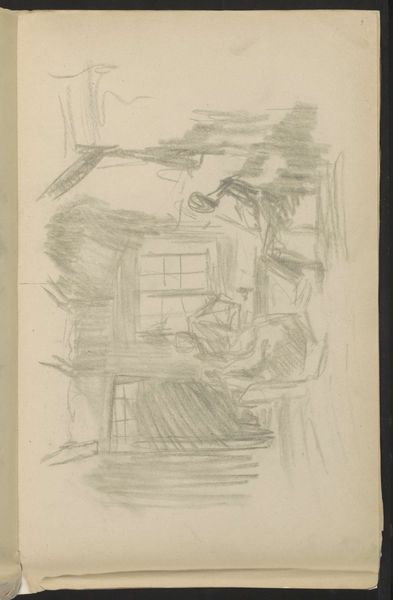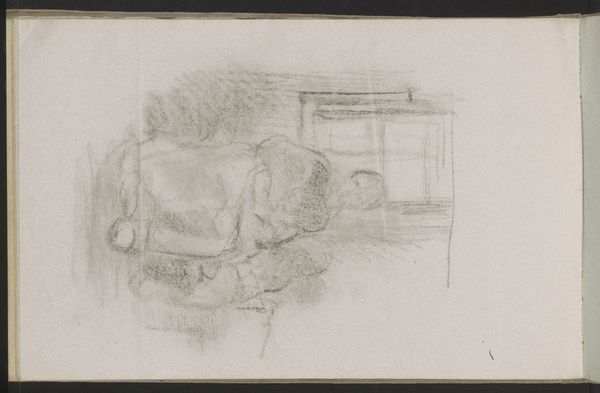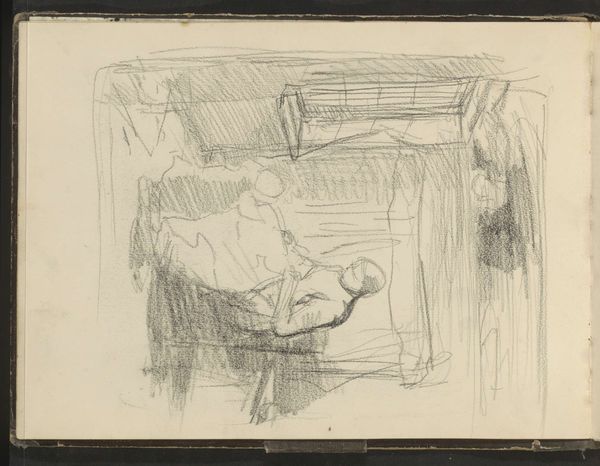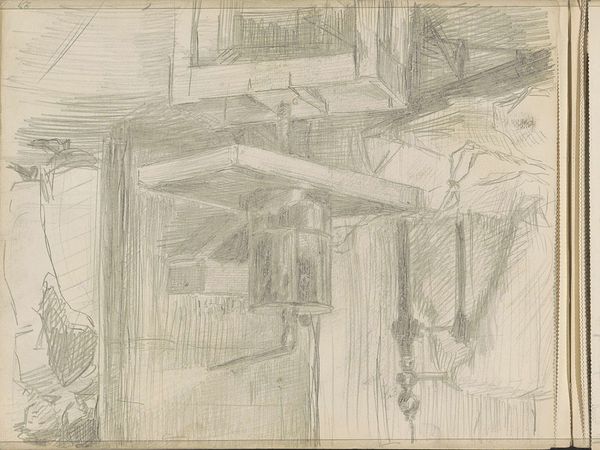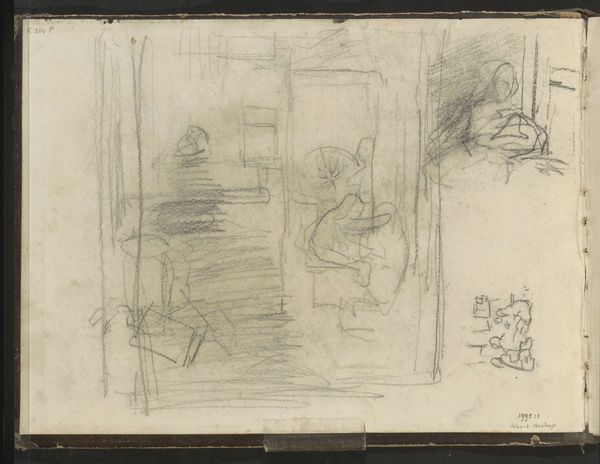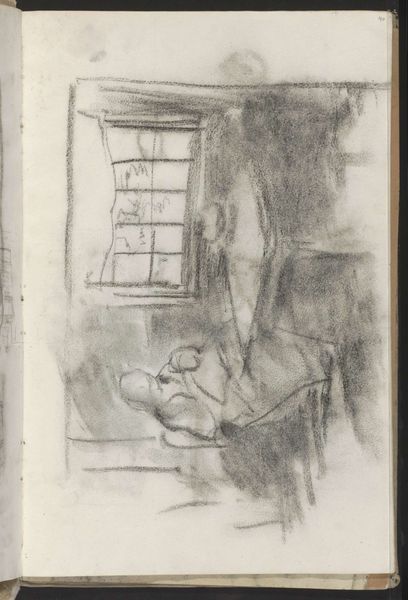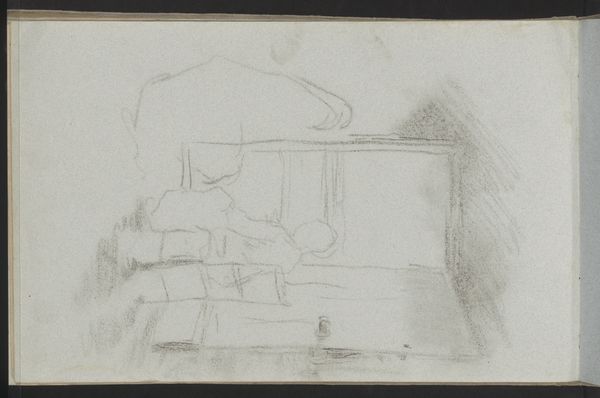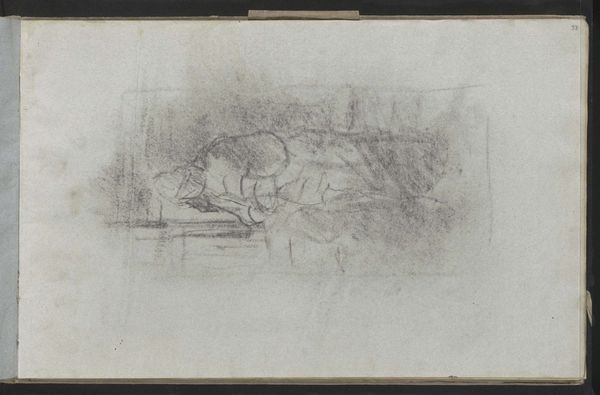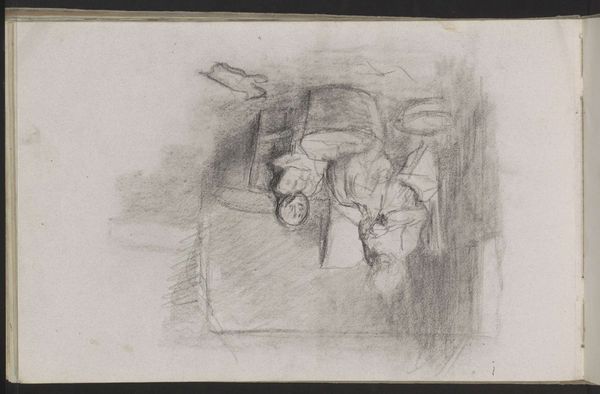
drawing, pencil
#
portrait
#
drawing
#
amateur sketch
#
toned paper
#
light pencil work
#
impressionism
#
pencil sketch
#
sketch book
#
incomplete sketchy
#
personal sketchbook
#
intimism
#
detailed observational sketch
#
pencil
#
sketchbook drawing
#
genre-painting
#
sketchbook art
#
realism
Copyright: Rijks Museum: Open Domain
Curator: This unassuming pencil drawing, titled "Naaiende vrouw bij een open raam" – or "Woman Sewing by an Open Window"–is attributed to Albert Neuhuys, and it's believed to have been created sometime between 1854 and 1914. It currently resides in the Rijksmuseum collection. Editor: It's quite ethereal, isn’t it? The lightness of the pencil strokes almost makes the woman seem to float in the composition. I find myself wondering about her story, the texture and meaning of the cloth on which she labors...it hints at a social commentary. Curator: Absolutely. While appearing as a simple genre scene, Neuhuys, like many artists of the time, engages with the symbolism of domesticity. Sewing itself was fraught, associated both with feminine virtue and the relentless, often unpaid, labor expected of women. It’s a symbol we see repeated in Dutch art, but rarely rendered so subtly. Editor: It's hard to ignore the stark contrast between the luminous open window, suggesting freedom and possibility, and the enclosed space in which the woman is confined. The act of sewing, often deemed ‘women’s work,’ became a potent symbol of their restricted agency in the nineteenth century, a sort of enforced idleness disguised as activity. Is she choosing to be there, or does society demand her presence in that dim, internalized space? Curator: The open window— a direct reference to other traditions and masters—allows us to observe these nuances. Dutch 17th-century painters like Vermeer used the window as a powerful source of light, divine presence, and quiet observation, but by this period we may be witnessing its role in emphasizing the constricting social structures surrounding women's lives. Light streams in, but her back remains toward it. The ambivalence is powerful. Editor: And the anonymity enforced by the sketchy nature adds a layer of universality. She represents all women confined by circumstance and expectations of domesticity. It certainly makes me think of the exploitation inherent within seemingly benign domestic duties and prompts discussion on labor and gender. Curator: Indeed. This simple sketch opens onto layers of complexity. What appears at first as just an everyday snapshot soon turns into a subtle critique. Editor: Yes, it truly highlights the silent stories embedded within the everyday acts of women throughout history, making us pause and question the social constraints that defined their roles. The domestic can no longer be regarded without also accounting for a political context. Curator: Thank you. These understated qualities really do lend it enduring appeal and speak to continuing societal issues.
Comments
No comments
Be the first to comment and join the conversation on the ultimate creative platform.
